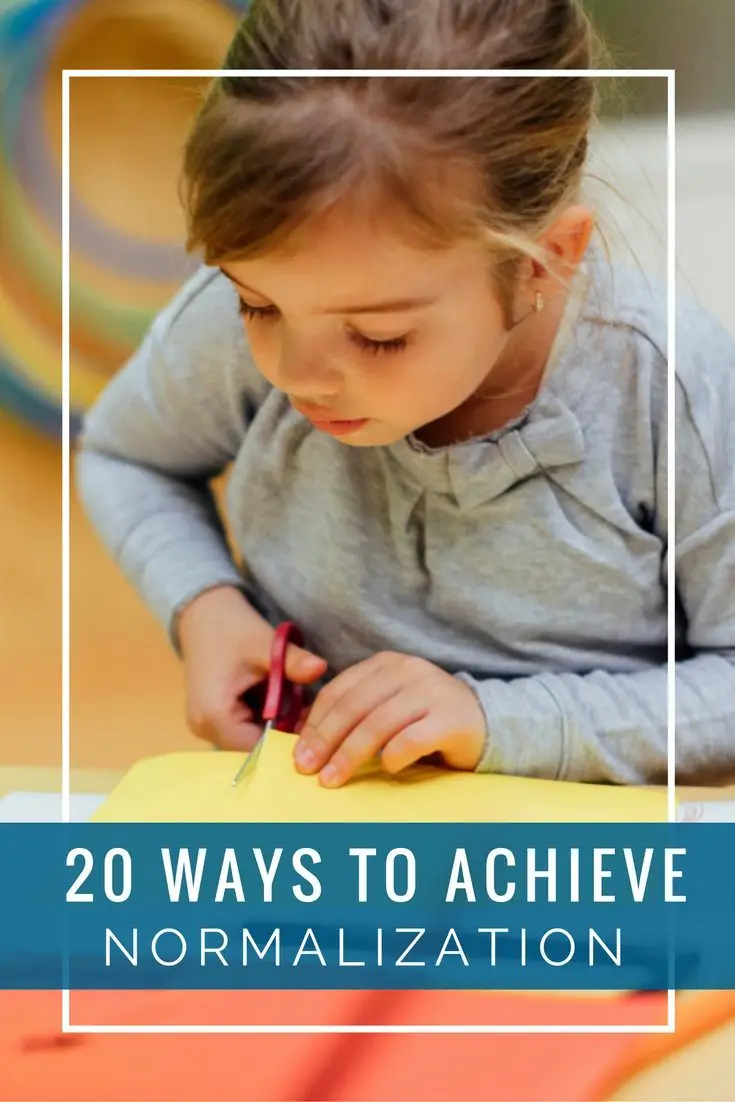You’ve heard the term before but what the heck is normalization and how does one actually achieve normalization in a Montessori classroom setting?
First, a “normalized” child demonstrates a love of work, concentration, self-discipline, and sociability. Montessori normalization, in essence, is an inner peace achieved through focus and concentration. Montessori normalization is a beautiful sight to observe. You will know when you see it.

Your job as the guide is to optimize the child and his environment. When you find a match between the child and his environment, he will self-regulate and have self-discipline. In theory, the job of Montessori teachers is to prepare the Montessori environment for the children. Done properly, this preparation will help a great deal with normalization.

How to Achieve Normalization in a Montessori Classroom
- Use positive discipline
- Seek out eye contact, especially when you’re expressing your main points. (e.g. a ground rule of the classroom). If the child is not paying attention, your statement will be ineffective.
- Find a good spot to observe the classroom with a “bird’s eye view” with the ability to move freely as children need you to intervene. Observe a child more closely if need be.
- A child may only use material if he knows how to use it. In other words, the child is able to choose any material as long as he has had a lesson on that material.
- When working with/in a group of children, sit with them, and use an economy of words. In other words, if a child is beginning to act a bit disruptive, simply place a hand on his back, or make eye contact with him to help him regulate the group with a few words.
- Follow-through is critical. Mean what you say and say what you mean.
- Avoid “cutesy” names like “honey” and “sweetheart” when addressing a child. Use her proper name.
- Set ground rules at the beginning of the school year. Involve the child in creating these ground rules. Think about introducing Grace & Courtesy lessons early in the year.
- Always explain the reasoning behind a rule. For example, “walk in the classroom” might be because running poses a safety issue. Guide children to understand the reasons behind the boundaries of the classroom.
- The same goes for material in the classroom. Always use the proper name of the item.
- Avoid extensive conversations with the other adults in the classroom while children are present.
- Lean into older children to give lessons to younger children in the classroom. This approach not only assists the teacher a great deal, but it also gives the older child an opportunity to practice skills as well as hone communication and leadership skills.
- If a child needs help, guide them to 1) try themselves, 2) seek out a peer to help, and 3) seek out an adult to help. In other words, the adult in the classroom should be the last resort.
- Don’t speak across the room to a child. Approach him and speak at his level.
- Encourage a child to make his own decisions as long as these decisions are within the realm of his capabilities.
- Come up with a way for a child to interrupt you without having to use his words. If he needs your attention, ask him to raise his hand to alert you, or ask him to place his hand on your shoulder or back. You do the same back to him to let him know you’ve seen him. Acknowledge you’ve registered that he needs your attention.
- With the above said, don’t interrupt a child and another teacher or a child working with another child. Set the example. Be the model.
- Be kind, yet firm. This point is a general one but should particularly be used during the first two months of the school year. You’re a teacher, not a friend.
- Always demonstrate from the child’s perspective. For example, when tying a shoe, make sure to demonstrate it from the child’s point of view.
- If you witness imminent physical danger to materials or to a child, stop it immediately but intervene without hesitation.
Marnie
